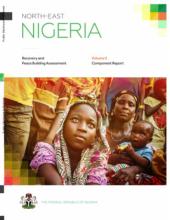Land Library Search
Through our robust search engine, you can search for any item of the over 73,000 highly curated resources in the Land Library.
If you would like to find an overview of what is possible, feel free to peruse the Search Guide.
/ library resources
Showing items 1 through 9 of 104.This note is part of an Action Notes series and provides guidance for governments and companies on examples to follow to engage youth in participating in agriculture.
Since 2009, insecurity in the North-East of Nigeria has led to the loss of over 20,000 lives and the displacement of over two million people. Throughout the region livelihoods have been disrupted, and homes, public buildings and infrastructure destroyed.
This report looks at the growth poles
policy in Romania to determine ways to increase its
effectiveness and efficiency for the next programming cycle
(2014-2020). The growth poles policy in Romania has been
Integrated Development Plans (IDPs) have
been introduced in Romania as a prerequisite for accessing
EU funds under the Regional Operational Program (ROP). The
IDPs designed for growth poles represent a specific category
The current report is part of the work
on integrating poor areas and marginalized communities in
Romania. Specifically, the Bank's technical assistance
provided through this project focuses on three primary
Over the last 20 years, poor rural
farmers in Nigeria have seen the benefits of community
organization as a tool for local economic development under
the National Fadama Development Project series. They have
Over the last decade, the countries of
the Latin America and the Caribbean region experienced a
deep economic and social transformation which lifted
millions out of poverty and swelled the ranks of the middle
This paper aims to contribute to
learning on community engagement and community driven
development (CDD) in urban areas. Specifically, the review
describes the World Bank’s use of participatory and CDD
Paralleling the increasing disparities
in income and wealth worldwide since the 1980s, cities in
developing countries have witnessed the emergence of a
growing divergence of lifestyles, particularly within the



